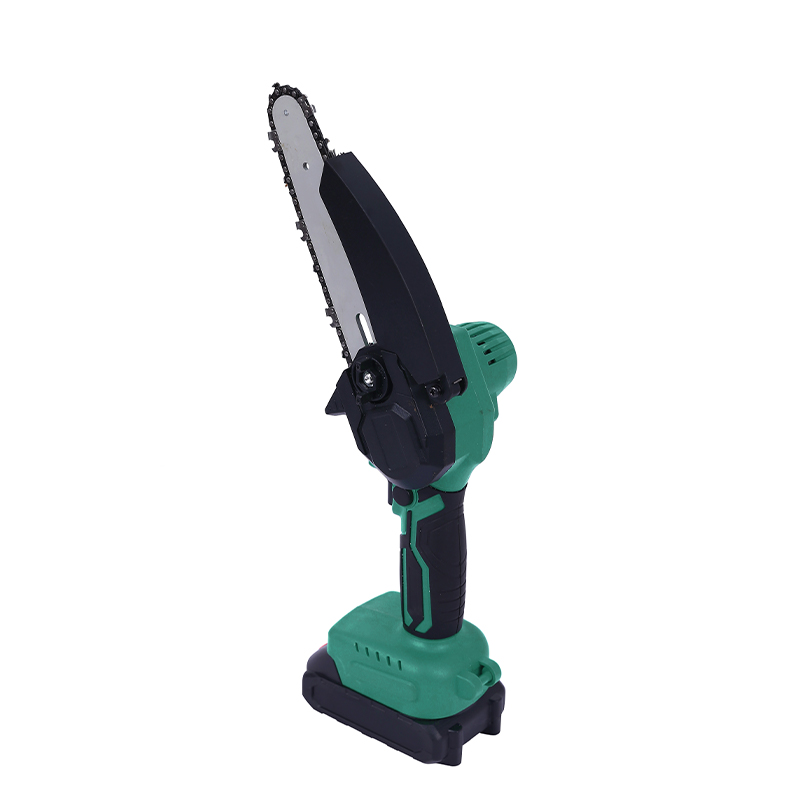Motor Technology and Efficiency
The primary distinction between brushless cordless chain saws and other models lies in the motor technology used, which directly affects efficiency, power output, and performance.

- Brushless Motors vs. Brushed Motors: Brushless motors eliminate the use of brushes and commutators found in brushed motors. This design reduces mechanical friction, allowing the motor to operate more efficiently and generate less heat. In contrast, brushed motors rely on physical brushes that wear over time, reducing efficiency and requiring more frequent maintenance.
- Power-to-Weight Ratio: Brushless motors generally offer a better power-to-weight ratio than brushed or small gas-powered engines. This allows cordless chain saws to deliver comparable cutting performance while remaining lightweight and easier to handle. Users benefit from reduced fatigue during prolonged use.
- Consistent Performance: Brushless motors maintain a steadier performance under load. When cutting through dense wood or performing repeated cuts, the motor is less likely to experience power drop-offs compared to brushed motors or some lower-powered gas engines. This consistency contributes to smoother operation and a more predictable cutting speed.
Power Source and Mobility
Another significant difference is the power source. Brushless cordless chain saws rely on rechargeable batteries, while traditional chain saws often use gas engines or corded electricity.
- Cordless Operation: Brushless cordless chain saws are powered by lithium-ion batteries, providing mobility without the limitations of a power cord. This is particularly advantageous for users working in remote locations or areas without easy access to electrical outlets. Gas-powered chain saws offer mobility as well, but they require fuel and produce emissions, which may be less desirable in certain environments.
- Battery Life vs. Fuel and Cord Limitations: While battery-powered models have a limited runtime, modern lithium-ion batteries provide sufficient energy for moderate cutting tasks. Gas chain saws can operate longer if refueled, and corded electric models have continuous operation as long as they are plugged in. Users must consider task length and availability of resources when choosing a saw type.
- Ease of Transportation: The lack of fuel tanks or cords makes brushless cordless chain saws simpler to transport and use. They are generally lighter than gas-powered models and do not require handling flammable liquids, which can be advantageous in safety-sensitive environments.
Maintenance and Operational Considerations
Maintenance requirements and operational convenience are other areas where brushless cordless chain saws differ from other types.
- Lower Maintenance Requirements: Brushless motors do not have brushes that wear out, eliminating the need for regular brush replacement. In contrast, gas-powered chain saws require engine maintenance, such as carburetor adjustment, spark plug replacement, and fuel system cleaning. Brushed electric models need periodic brush checks and replacements, which are not necessary for brushless designs.
- Reduced Noise and Emissions: Brushless cordless chain saws operate with less noise than gas-powered saws and produce no direct emissions. This makes them more suitable for residential areas or enclosed environments. Gas chain saws, while powerful, produce exhaust fumes and require careful handling to manage emissions and noise levels.
- Operational Simplicity: Starting a brushless cordless chain saw is generally straightforward, often requiring the push of a button. Gas chain saws require a pull-start mechanism, which may be physically demanding for some users. Corded electric saws start easily but are restricted by cable length, limiting operational flexibility.



 English
English русский
русский Español
Español







